Distinguished Alumni; Great Goans.
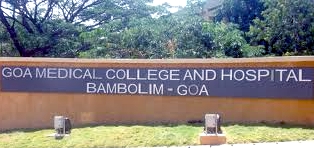 Western medicine was practised and taught in Goa from as far back as around the end of the 16th century. But the Portuguese established the medical school – Escola Médico-Cirúrgica de Nova Goa (now called the Goa Medical College) – more than two centuries later, in 1842. Before that, Goans interested in allopathic medicine trained under established doctors and obtained their licences after passing examinations set by them.
Western medicine was practised and taught in Goa from as far back as around the end of the 16th century. But the Portuguese established the medical school – Escola Médico-Cirúrgica de Nova Goa (now called the Goa Medical College) – more than two centuries later, in 1842. Before that, Goans interested in allopathic medicine trained under established doctors and obtained their licences after passing examinations set by them.
But most of these were Catholics, for in the early decades after colonisation, hardly any Goan Hindus showed an interest in western medicine. It took a while for Hindus in Goa to enrol for the Portuguese-run course as well, for which the text books were in French.
Daunting early years
The decision to establish the medical college was taken at the local level following discussions between the Portuguese administration in Goa and groups of Goans. However, once it was set up, it had to overcome several difficulties to stay in existence. The newly established medical school needed funds and resources for improving the quality of education, the laboratory conditions, and the facilities for research; but the Portuguese government offered very little support.
Also, the students faced hurdles of their own. After completing the course, they could only practise medicine in Goa or other Portuguese colonies in Asia and Africa, but not in Portugal. That too, they could only work in subordinate positions under Portuguese doctors. If they wanted jobs in higher positions or even to teach at their own alma mater, they had to repeat the training in Portugal and pass the exams held by the medical institutions there. (Come to think of it, this could be compared to foreign doctors having to pass qualifying exams of certain countries even today as a precondition for working there.)
Now who wouldn’t want the better salary that comes with higher positions, right? So those who could afford it went directly to medical colleges in Portugal. Others chose to study closer to home, at colleges in British India. Interestingly, among the first eight doctors who passed out of the Grant Medical College in Bombay in 1851, four were Goans! They were: Sebastian Carvalho, Anant Chandroba Dukle, Bhau Daji Lad, and J. C. Lisboa. It’s not clear if a fifth graduate Paul Francis Gomes was also a Goan.
Coming back to the Goa Medical College, several Goan doctors opposed the discrimination shown to the graduates of this institution and condemned the apathy of the government in Portugal.
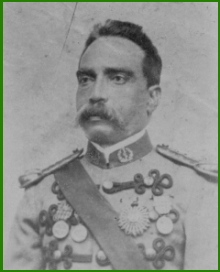 From among these bravehearts, one name stands out – Dr. Miguel Caetano Dias. A zuenkar who had obtained his medical degree in Portugal, he was a much decorated member of the Portuguese Army Medical Corps (in fact, the only Goan to be appointed as a General, no less, by the Portuguese government), and an outstanding doctor and scientist to boot.
From among these bravehearts, one name stands out – Dr. Miguel Caetano Dias. A zuenkar who had obtained his medical degree in Portugal, he was a much decorated member of the Portuguese Army Medical Corps (in fact, the only Goan to be appointed as a General, no less, by the Portuguese government), and an outstanding doctor and scientist to boot.
Dr. Dias was made the Director of the Medical College and Chief of the Health Services in Goa in 1906. When Lisbon began to consider shutting down the medical college, Dr. Miguel Caetano Dias not only fiercely resisted the proposed move, he also demanded that the curriculum be upgraded and succeeded in getting it reformed.
Despite the shaky start and the rough patches in its early history, it’s a matter of pride that many of the hundreds of medical graduates that passed through the portals of the historic Goa Medical College went on to join the ranks of great Goans, making their mark in public life or achieving eminence in their field.
Here are brief profiles of three great Goan doctors, all three illustrious alumni of the Goa Medical College.
Dr. Agostinho Vicente Lourenco of Margao (1822 -1893)
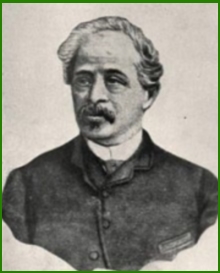 Path-breaking work in Polymer Chemistry in the 1800s!
Path-breaking work in Polymer Chemistry in the 1800s!
Agostinho Vicente Lourenco was the son of the local doutor. After graduating from the Escola Médico-Cirúrgica de Nova Goa in the very first batch, he received a scholarship to pursue further studies in Paris.
There, he made a switch from medicine to chemistry and graduated as a chemical engineer. He joined the famous research school of Adolphe Wurtz where he produced widely acclaimed research work in Polymer Chemistry, and synthesized a number of polymers at a time when the widespread applications of polymers that we see today in different industries was non-existent.
After receiving his Doctorate in Science from the Sorbonne, Dr. A. V. Lourenco worked for some time in Germany with Robert Bunsen (after whom the Bunsen burner we use in chemistry labs is named), and also in England with another famous chemist, Wilhelm Hofmann.
Thereafter, he held the position of the Chair of Organic and Analytical Chemistry at the reputed Escola Polytechnica (Polytechnic School) in Lisbon from 1862 till he passed away in 1893.
Dr. Agostinho Vicente Lourenco is acknowledged as one of the foremost chemists of this Lisbon institution. Not just that, a bust of Dr. Lourenco has been installed at the Lisbon Academy of Sciences alongside those of world famous chemists like Lavoiseur, Liebig, and Hofmann. Another one erected as a tribute to him can be seen at the Margao Municipal Garden.
Dr. Francisco Luis Gomes of Navelim (1829 -1869)
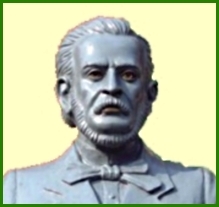 Honoured as “Prince of Intellectuals” in Europe
Honoured as “Prince of Intellectuals” in Europe
The true genius of Dr. Gomes is evident from his multiple achievements overseas as a brilliant parliamentarian and as an accomplished economist, philosopher, political scientist, physician, historian, and writer as well. Read more about Dr. Francisco Luis Gomes here.
Dr. Froilano de Mello of Benaulim(1887 -1955)
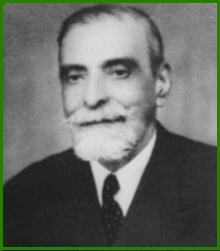
Public health reformer, internationally acclaimed microbiologist
Froilano’s family fortunes took a turn for the worse after his father, a lawyer, passed away prematurely when he was barely 12 years old. So he had to work to support his studies throughout his student days. After obtaining his medical degree in Goa, Indalencio Pascoal Froilano de Mello completed his doctorate in medicine in Portugal from the University of Porto (Oporto in English), and postgraduate courses in Parasitology at reputed German institutes.
De Mello’s extensive research work in tropical medicine and bacteriology earned him prestigious awards and international recognition as an expert in his field. He published over 200 research papers on microbiology in Portuguese and many of the microorganisms he discovered bear the Latin names he gave them followed by his surname de Mello as the discoverer.
Due to his untiring efforts, the TB sanitarium was built in Margao, the first leprosarium in Asia (now named as Leprosaria Froilano de Mello) was set up in Macazana, and urban sanitation was improved in Panjim.
In 1945, Dr. Froilano was elected to the Portuguese Parliament. But he was too strong-minded for Salazar’s regime. Finally, following political persecution by the Portuguese government, he moved to Brazil in 1951 where three of his children had settled down. As an eminent bacteriologist and researcher, he was invited to lecture on protozoology at medical conferences in Brazil and continued his research on protozoa there till his death in 1955.
In Sao Paulo, Brazil, they’ve named a street after Froilano de Mello, and in the Sao Paulo Medical College, one of its halls is named after this great son of Goa.
I know summaries can never do justice to the stature of these distinguished alumni of the Goa Medical College. They led such extraordinary lives… But you’ll agree, catching even glimpses of their brilliant achievements is a humbling experience. Let’s hope the heights they soared to and their indomitable spirit will inspire newer generations of Goans including Goan doctors to strive for excellence too.
So… Viva Goa!

Don’t forget:
Germano da Silva Correia(1888-?)
Francisco António Wolfango da Silva(1864-1947)
Thanks for mentioning these two distinguished alumni, Antonio. The necessity to keep blog posts brief made me restrict the profiles to just the three greats in the history of the GMC. Dr. Alberto Carlos Germano da Silva Correia (1888 – 1967), succeeded Froilano de Mello as Director of the GMC. When a course on ‘the history of medicine in India’ (meaning the history of European medicine in Portuguese India) was introduced in the 1940s and 1950s he was the first professor picked to teach this course. Germano Correia, as he was popularly called, was an eminent military doctor, teacher, anthropologist, and author of several books on topics related to the humanities and the sciences including some on epidemics in Goa. Dr. Francisco António Wolfango da Silva(1864-1947) was a prominent physician, writer, and scholar, and a former Director of the GMC, and also of the Health Services of Portuguese Goa from 1915 – 1926. He was the recipient of several awards from the Portuguese government for his work towards combatting smallpox epidemics in Goa.
Submissions of the names of other distinguished GMC alumni are welcome from visitors to this website.
Froliano De Mello Dotor-bab should rightfully be called ‘Father of Panaji’ for his wonderful legacy. He is the one who got those beautiful rain trees planted all over the town from seeds procured from Cuba in the late 1930s. The Panaji Promenade is his gift to all of us. A man lives forever through his deeds.
Absolutely right, Swati. During his tenure as the Mayor of Panaji from 1938-1945, Dr. de Mello had undertaken the beautification of the Mandovi promenade. He had a balustrade put up and beautiful tropical trees like acacia, jacaranda and rain trees planted along the promenade and other streets. The majestic, shade-giving trees we admire across the capital city today are one of the many legacies of Dr. Froilano de Mello. This great son of Goa had also played a major role in fighting and successfully controlling the epidemic of malaria that raged across Goa in the 1920s.
Dear Veena,
A good friend of mine, back from my Liceu days (1950´s) forwarded me your article on the goan manddó. I enjoyed reading the comments and listening to the music- just lovely! Then I opened your blog on Escola Medica de Goa from which I graduated (1960-1965). I agree with many of your comments on the Escola Médica but I do not on agree that ” hardly any Goan Hindus showed an interest in western medicine, or the Portuguese-run course for which the text books were in French.” Many of my colleagues in Escola Médica were Hindus. Textbooks when I studied were in French, Spanish and English. The reason is because there were not many textbooks in Portuguese. Portugal had very few medical schools and printing books in Portuguese could not be justified. Also the adopted books were the best in the specific area/speciality. I recall that Escola Medica supplied doctors to Portuguese colonies in Africa ( because of the dark skin and being brought up in the tropics they were less liable to contract malaria).
I would appreciate you including me in your mailing list.
Carlos Peres da Costa
Médico ~Escola Medica de Goa (1965) Goa
PhD in Physiology. Baylor College of Medicine. Texas (1971)
Thanks for appreciating my blog and mando music, Carlos, and my posts on your Alma Mater. I’m sorry what I meant about Goan Hindus being reluctant to learn western medicine did not come across clearly. So I’ve tweaked the sentence in that para to make it somewhat more lucid. As you can see, I was referring to the first few decades after colonisation, much before the Medical School was set up, when those interested in a career in western medicine had to acquire training from established doctors. The first few batches of the Goa Medical College also almost entirely comprised Goan Catholics. You studied medicine there more than hundred years later by which time allopathy was an attractive career option for both communities in Goa.
To join my subscription list for being alerted about the latest content, you need to subscribe to the RSS feed by clicking on the orange and white coloured square icon at the bottom of the archives list on the right. Hope you continue enjoying your visits to this blog.
You forgot to mention my father Dr. Joao Manuel Pacheco de Figueiredo who was the last Director of Escola Medico-Cirurgica de Goa (Goa Medical School) and the first Dean of Goa Medical College. He was internationally known as a medical researcher and historian of medicine and the author of numerous publications in professional journals. He was a highly respected teacher. He was awarded the degree of Doctor of Medicine Honoris Causa of the University of Coimbra, Portugal, and was an honorary member of the Portuguese Society of Medical Sciences. He was instrumental in promoting the upgrading of Goa Medical School to Goa Medical College. He had many distinguished students such as Dr. Govinda Vaidya and Dr. Vamona Sinari.
Thanks for pointing this out, John. As I mentioned in my reply to an earlier comment, this being a blog post, the word count cannot be too long. And consequently, of the many illustrious alumni of GMC, I had to restrict the profiles to just three. But, I agree with you. The work of your late father—who was not just one of the accomplished alumni of GMC, but also a great son of Goa—needs to be acknowledged and appreciated by present-day Goans.
Dr. Joao Manuel Pacheco de Figueiredo represented the Portuguese-established Goa Medical School at a number of international medical conferences including the first World Conference of Medical Education in 1953 held in London. Recently, one of Dr. Pacheco de Figueiredo’s students, Dr. Janvrubai Kamat, in an article in the April, 2017 issue of Goa Today published on the occasion of the 175th anniversary of GMC, mentioned him as a fine example of the exceptional faculty under whom she studied.